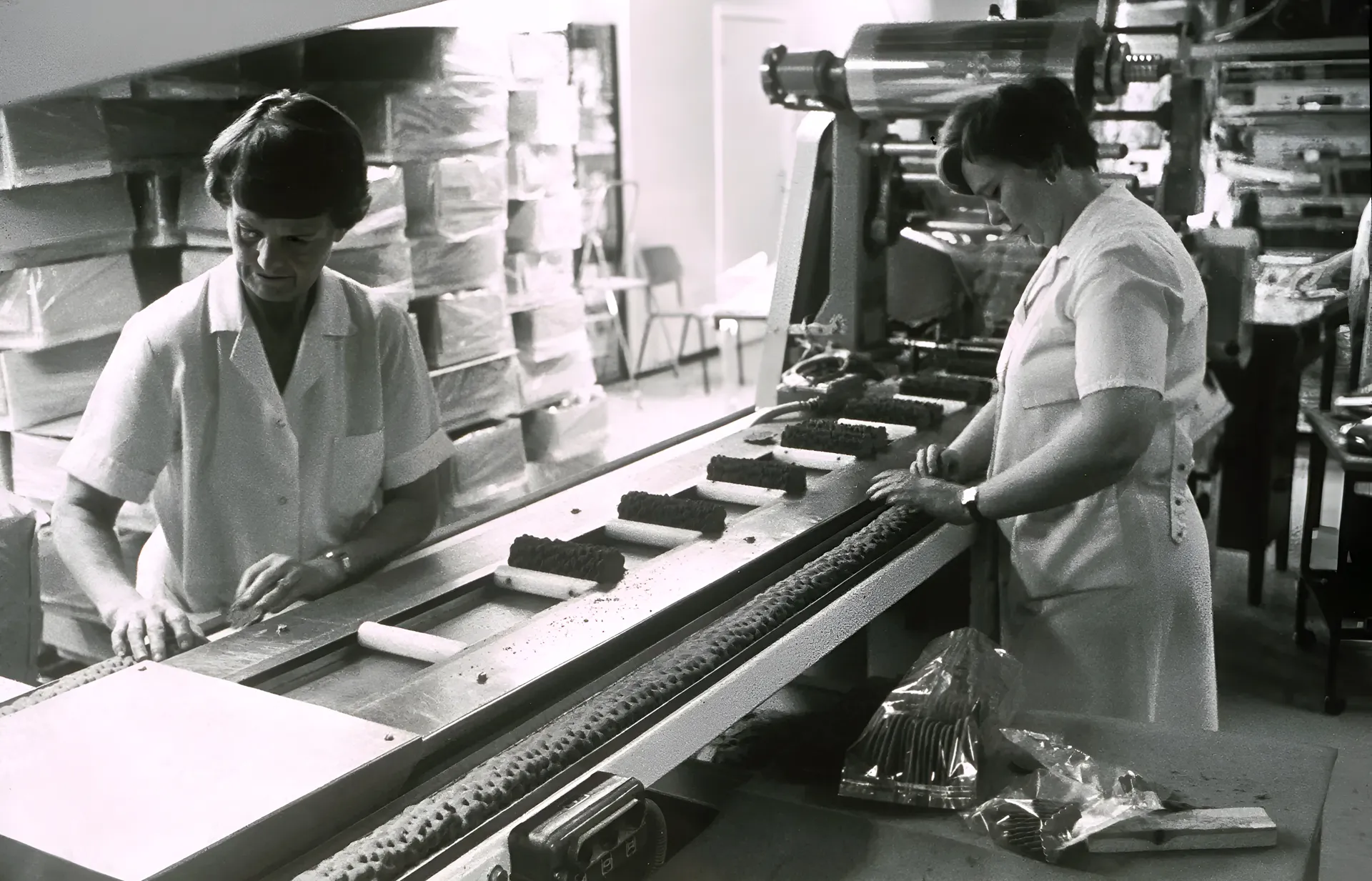
History & Tradition
Gingerbread History
Gingerbread has a long history. Here are some important highlights of our spicy past.
Gingerbread Art in Germany
In 14th century Germany, many artists also worked as gingerbread bakers. They carved beautiful gingerbread molds in wood to shape coats of arms, kings, drummers, riders, portraits, seals, and religious motifs. Once the motif was carved, the artistic bakers could press dough into the molds and then bake beautiful cookies.

The Nuns' Little Secret
There are records dating back to 1444 describing how the nuns in Vadstena baked and ate spiced gingerbread cookies to aid digestion. At that time, the dough also included pepper, cardamom, anise, fennel, cedar oil, lemon and orange peel, in addition to the traditional gingerbread spices of cinnamon, ginger, and cloves. During the Middle Ages, the dough was sweetened with honey instead of sugar.
King Hans' Gingerbread Medicine
The Swedish-Norwegian-Danish king Hans (reign 1497-1501) was prescribed gingerbread by his doctor. The king had a bad mood, and there was a general belief that gingerbread made people happy. There are records from a pharmacy in Copenhagen showing that several kilos of gingerbread were sent to King Hans. The rumor that gingerbread makes you kind still exists today, so maybe the cure worked.
An Important Commodity
The first records of gingerbread as a commodity come from the 16th century, when they were sold in monastery pharmacies and bakeries in Swedish cities, as well as at markets and fairs throughout the country. According to preserved import and inventory lists, ready-made gingerbread was also imported, primarily from Nuremberg, which was an important center for medieval gingerbread production.
Swedish Thins/Anna's Thins
In the USA and around the world, Annas pepparkakor are sold under the name Swedish Thins or Anna's Thins. They come in different flavors such as Ginger Thins, Almond Thins, Cappuccino Thins, and Orange Thins. For many Swedes living abroad, gingerbread has become somewhat of a national cookie that is served at exotic Lucia celebrations along with mulled wine.
Gingerbread as a Wish Cookie
There is a little game with gingerbread that has survived through the centuries; you hold the gingerbread in your hand and press it in the middle. If the gingerbread breaks into three pieces, you silently make a wish that you want to come true.

Do Gingerbread Cookies Contain Pepper?
Today's gingerbread cookies do not contain pepper, but in the medieval gingerbread doughs, pepper was often mixed in. At that time, pepper was one of the most important commodities from the Orient. Pepper was believed to have a medically calming effect and was also used for digestive problems. The reason why gingerbread is called pepparkaka may also be that pepper was the common name for all exotic spices, and when people said pepparkaka, they actually meant spice cake. The spices in today's gingerbread recipe are cinnamon, ginger, and cloves. Many older recipes also include nutmeg and grains of paradise, a ginger-like plant from West Africa with a peppery taste. Other spices that are sometimes used in gingerbread recipes are cardamom, fennel, anise, orange peel, lemon zest, cedar oil, and pepper itself.
When Gingerbread Became a Christmas Cookie
Originally, gingerbread was a year-round cookie that was often sold for medicinal purposes. It wasn't until the 19th century that gingerbread became a Christmas cookie, probably because a larger population had access to both sugar and flour. For Christmas, people would have big baking sessions with various types of cookies. Gingerbread was a popular choice in that context.
The History and Symbolism of Gingerbread Molds
For a long time, gingerbread was shaped by carved wooden molds, but with industrialization, gingerbread molds made of tinplate were introduced, which could be used to cut out rolled dough. The most famous shape is the heart, a symbol of love that was used in monasteries. The pigs represented well-being, and the angels represented goodness. The intricate details of the older wooden molds were replaced by decorations on the cookies after they were baked.
Various Types of Gingerbread
When people talk about gingerbread, they usually mean the small, cut-out figures that are baked until they are hard and can be stored in a cookie tin for a long time. However, in the past, a thicker version of gingerbread was equally common. They were already baked by medieval monks and contained a lot of honey and pepper. A third type is the soft gingerbread that is baked in a bundt cake pan and sliced.